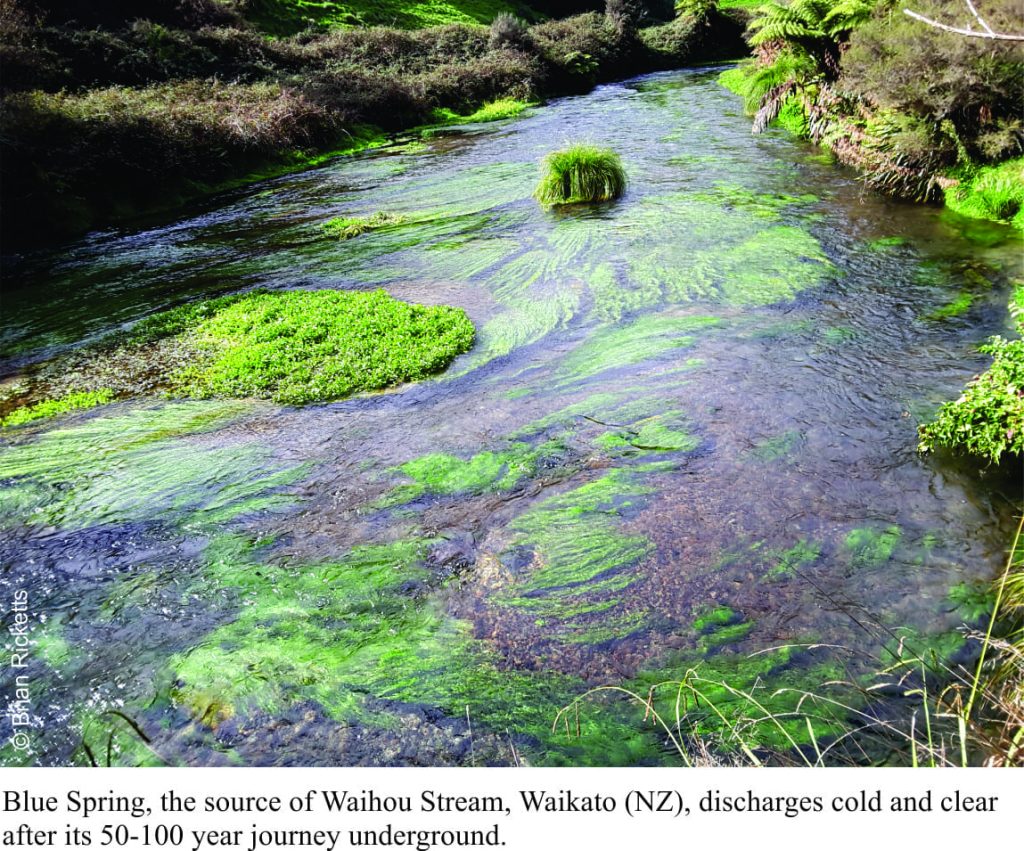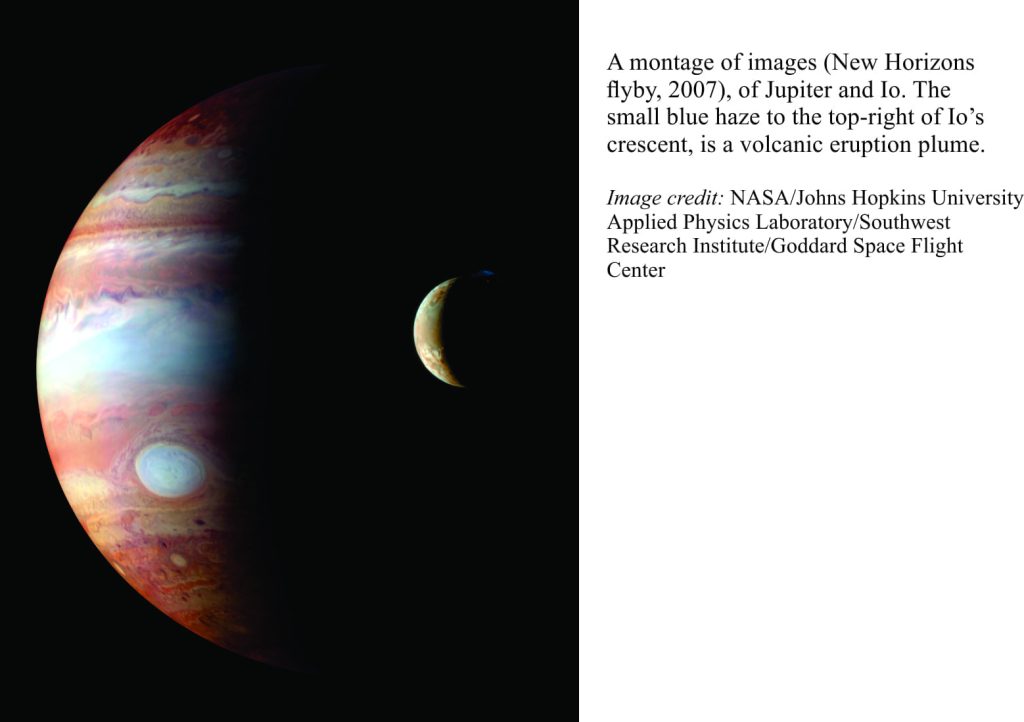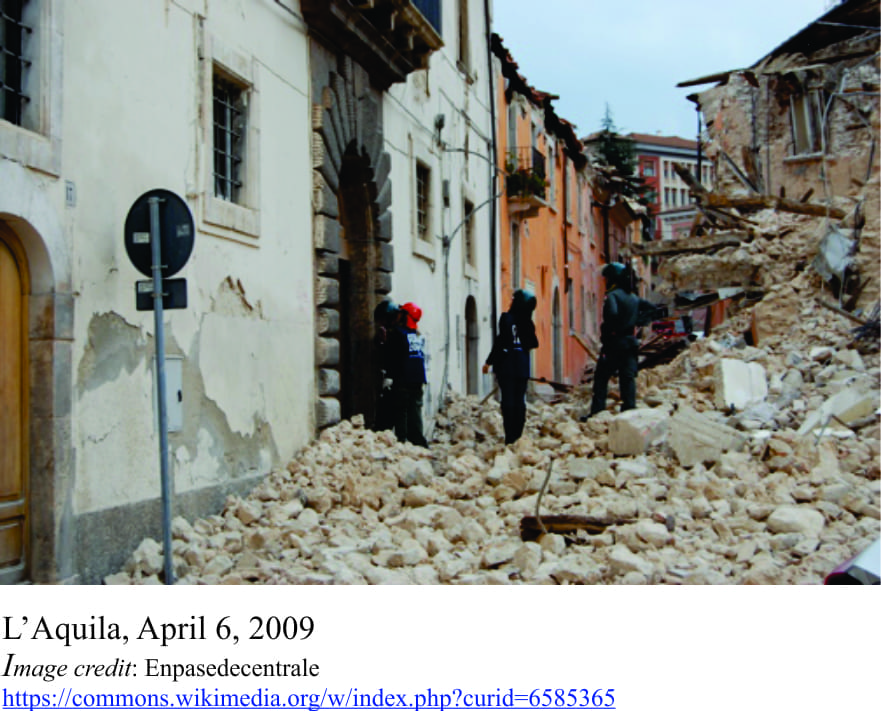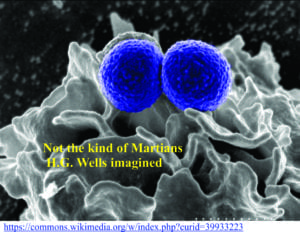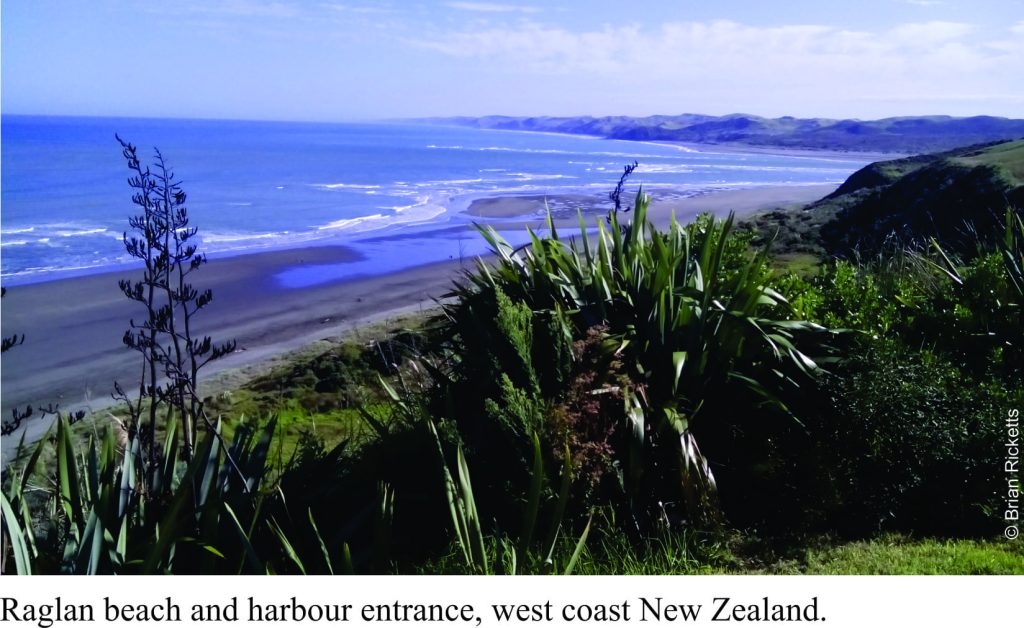It rains quite a bit on Mamaku Plateau, the tableland underlain by volcanic debris that was deposited violently 240,000 years ago; an eruption that also gave rise to Lake Rotorua caldera (central North Island, New Zealand). Some of that rain seeps into the myriad fractures, nooks and crannies, and heads west as groundwater. Fifty to 100 years later that same water emerges, chilled to a cool 11oC, at Blue Springs (about 40km west of Rotorua). Spring water here flows at 42 cubic metres per minute (9,240 gallons per minute), enough to maintain a decent-sized stream (Waihou Stream). Continue reading
Tag Archives: scicommNZ
Io; Zeus’s fancy and Jupiter’s moon
Zeus, the head-honcho of assorted Greek gods, heroes, nymphs, and mortals, was chiefly the God of the Sky, or Heavens. One of his minor portfolios was the upholding of Honour, but as mythology relates, he didn’t put much energy into that particular task; he was a philanderer, much to the annoyance of his own wife, Hera (I guess his energies were directed elsewhere). One such misdirection was Io, a mortal woman, who had the misfortune to be turned into a heifer by Zeus, to hide the infidelity from Hera. Io’s memory now survives as a planetary body; one of the Galilean moons of Jupiter is named after her (to be named a moon of the Roman God Jupiter, seems like a historical slap in the face to the Greek deity). Continue reading
An Italian job; seismic risk-assessment at risk
Life is a risky business. Not a day goes by when some aspect of our lives comes under the gaze of risk assessment, an analysis of potential adversity, the probability that some event will impact our well-being. No black and white determinism here; we have become probabilistic entities. The seemingly simple act of driving your car, is translated into an actuarial assessment that determines the cost of insurance, a government’s health budget, a funeral director’s business plan, or a vehicle manufacturer’s liability. All are predicated on the probability of some event taking place – one chance in x occurrences. No luck, or absence of luck? Luck is when you win the lottery without buying a ticket.
Predicting natural phenomena, like volcanic eruptions, tornadoes, or earthquakes, is the stuff of science. The problem with these kinds of events is that they can have global impacts. How does Continue reading
Life on Mars; what are we searching for?
I believe alien life is quite common in the universe, although intelligent life is less so. Some say it has yet to appear on planet Earth. Stephen Hawking
I can only imagine H.G. Wells bitter disappointment if he were to learn that Martians were little more than primitive microbes. All that hype and scare-mongering for nothing. Because that, it seems, is all we are ever likely to find on Mars. They may be intelligent microbes, but microbes nonetheless.
Present conditions on Mars are not conducive to thriving populations of anything living – at least in any life form we are familiar with. Incident UV and other solar radiation, low atmospheric pressure, an atmosphere almost devoid of oxygen, and the presence in soils of oxidizing molecular compounds such as perchlorates and hydrogen peroxide (think bleached hair), all contribute to rather inclement living conditions. It is possible that some life forms have survived these ravages, in sheltered enclaves or buried beneath the scorched earth, but it is more likely that, if life did exist on Mars, we will find the evidence written into ancient sedimentary rocks, or perhaps as chemical signatures. It is these attributes that current exploration programs, both landed rover expeditions and orbiting satellites, tend to focus on. Continue reading
Which satellite is that? What does it measure?
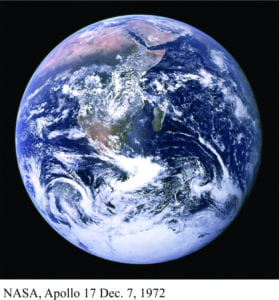

The sea level equation
Sea levels have risen and fallen countless times over geological history. We see this in the way successive strata are arranged and in the kind of ancient environments that each sedimentary layer or group of layers represents. For example, we may observe that layers deposited in relatively deep water are overlain by layers that indicate successively shallower conditions, then inundated once again by deeper seas. Geologists consider cycles of sea level change like this to be the ‘norm’. However, deciphering the causes of sea level change remains problematic; has global sea level risen or fallen (for example because of changing icecap volumes), or has the land surface and sea floor subsided or uplifted? Or have both processes been active? When we attempt to answer these questions, we need to remind ourselves of what processes are actually involved in changing actual and relative sea level. This post summarizes the most common causes. They are relevant not only for geologists trying to solve stratigraphic puzzles, but for anyone considering the effects and potential risks of changing sea levels as they take place today. Continue reading
Class 5; Geology for Kayakers, Kaituna River
Kaituna River, New Zealand


The Kaituna is an outflow of Lake Rotoiti, its headwaters next to the Highway at Okere Falls (just down the Road from Okere Falls Café); it exits at the coast in Bay of Plenty.

